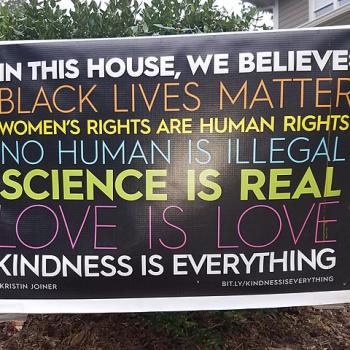More on Robert Putnam and his book Our Kids: The American Dream in Crisis, on the class gap in raising children. The Chronicle of Higher Education tells about how Putnam came upon his thesis and conducted his research. The article also tells about the neo-traditional “Ozzie and Harriet” families that have come back in middle class families, even as working class families are often abandoning marriage altogether. It also talks about the religious gap, with middle class families taking their kids to church, while working class families are abandoning churchgoing altogether. (We’ll be talking further about this last point.)From Can Robert Putnam Save the American Dream? – The Chronicle Review – The Chronicle of Higher Education:
Nearly a decade ago, in an annual class Putnam teaches on social capital, a generalization in the scholarly literature didn’t sit right with one of his students. To understand the series of events that unfolded from there, it helps to know a bit about the concept of social capital. The term, as Putnam defines it, refers to different kinds of connectedness, such as our informal links to relatives, friends, and acquaintances and our participation in communal functions like churches, sports teams, and volunteer activities. The basic idea of social-capital theory is that “social networks have value,” Putnam writes. “Community bonds and social networks have powerful affects on health, happiness, educational success, economic success, public safety, and (especially) child welfare.”
Soi, published in 2000 by Simon & Schuster, reflected a national sense of civic malaise with its argument that Americans had been pulled apart from each other and from their communities over the last third of the 20th century. The research also met with opposition. Had group life really atrophied, scholars asked, or had it just evolved beyond rotary clubs and other traditional forms of organization? Should the shrinkage be chalked up to less civic engagement, or to housewives becoming working women? Putnam himself followed Bowling Alone with a more hopeful volume in 2003, Better Together (Simon & Schuster), which chronicled efforts to renew communities and create fresh forms of social capital.
What struck Putnam’s Harvard student was one theme in the social-capital course at that time: the growing trend toward volunteering among high-school kids. The student, who came from a poor town out west, didn’t buy it. Students in her high school were not volunteering more. She guessed that a rise in résumé padding among collegebound kids accounted for the trend. And when she dug into the data, Putnam says, she turned out to be right. The rise in volunteering was concentrated among kids who planned to attend college. What’s more, the class gap extended beyond volunteering. You could see it in other social-capital indicators, like community involvement and social trust.
“It was not something that I had ever thought of, actually — class differences among kids in social capital,” Putnam says.
He didn’t think too hard about it at first. The professor treats his research a bit like an industrialist managing a factory, tackling broad questions by assembling teams of scholars to divide up the work. (Bowling Alone involved nearly a dozen graduate students and postdocs sifting through the literature on topics like sports sociology, public health, urban design, and media consumption.) In the 2000s, Putnam’s shop was cranking away on a study of diversity’s effects on civic life, plus a 700-page book on the country’s changing religious landscape (American Grace, Simon & Schuster).
But as Putnam’s team started to look more seriously at the class conundrum that his student had identified, it became clear they had stumbled onto one corner of a larger story. The professor began to encounter other research by scholars who had started to worry about the consequences for children of rising income inequality. Animating this new empirical work was a concern that income inequality, which had grown over the past 35 years or so, might lead to kids’ having increasingly unequal opportunities. And those unequal opportunities, the thinking went, might translate into lower social or economic mobility.
For Putnam, a key moment came when his trail led to the work of a Stanford sociologist, Sean F. Reardon. Reardon had turned up a class gap similar to what Putnam was seeing, only in a different domain: children’s academic achievement. The sociologist found a growing class divide in math and reading test scores. “The achievement gap between children from high- and low-income families is roughly 30 to 40 percent larger among children born in 2001 than among those born 25 years earlier,” Reardon wrote in a chapter he contributed to the 2011 book Whither Opportunity? (Russell Sage Foundation).
And on it went. In the literature on family structure, Putnam observed that a “neo-traditional” pattern of Ozzie-and-Harriet-like marriages had emerged among the college-educated upper third of American society, with divorce rates diminishing from their 1970s peaks. By contrast, sexual partnerships became less stable among the high-school-educated lower third of the population, with childbearing increasingly separated from marriage.
When it came to raising kids, Putnam learned, there had been essentially no difference in the amount of time that children got with their parents in the 1970s. But now the average infant or toddler of college-educated parents receives half again as much daily “Goodnight Moon time” — that is, time spent on developmental activities like reading — than kids of high-school-educated parents.
Or take religion. Involvement in faith groups had historically been less class-biased than other community activities. But now, Putnam found, poor families tended to participate less in religious communities than rich families. And young people’s church attendance, which declined across the country in recent decades, dropped twice as rapidly among kids from the bottom third of the socioeconomic scale as among kids from the top third.
HT: Jackie















